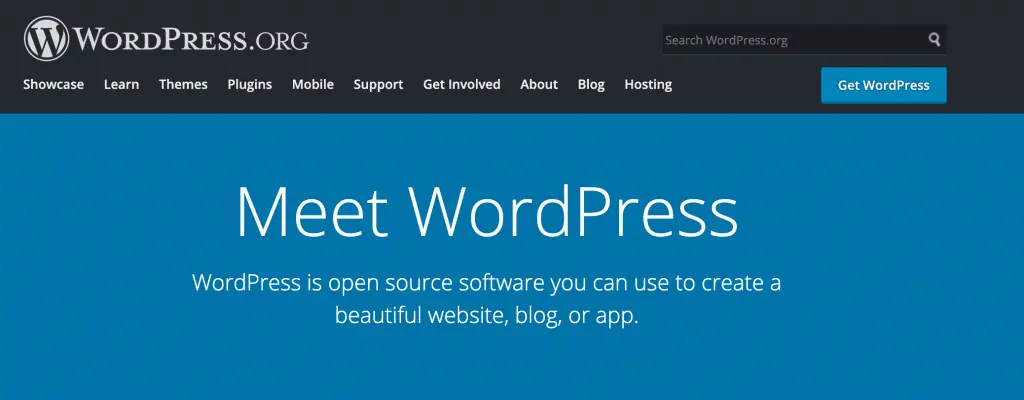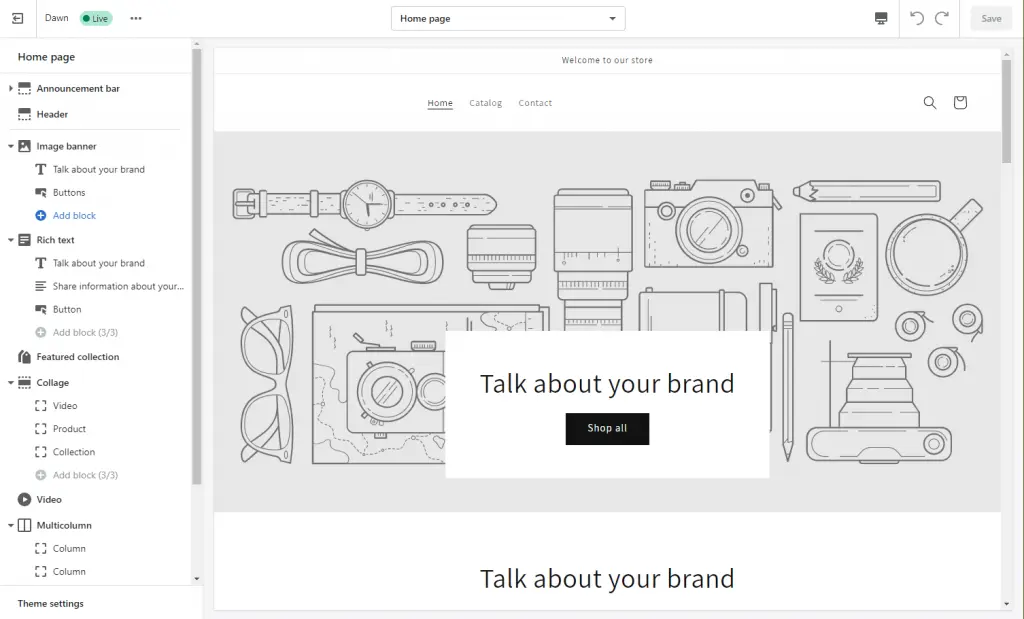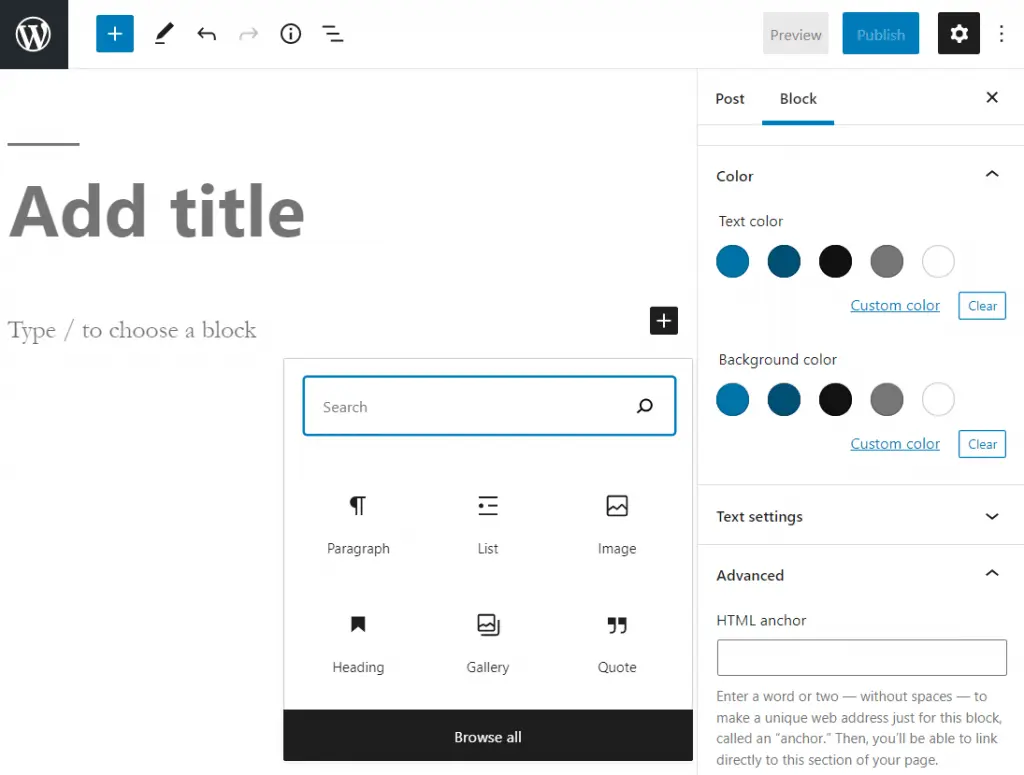Shopify and WordPress are two of the most high-quality platforms for online stores. However, choosing between these top options can feel tricky: which one has the features you’ll need to support your digital storefront?
While each e-commerce platform is unique, we believe that you’ll be happiest with WordPress. It’s a super flexible platform with highly adaptable features, meaning you can easily customize everything from pageIn WordPress, a page is a content type that is used to create non-dynamic pages on a website. Pages are typica… More designs to payment options.
Fortunately, making the choice doesn’t have to be complicated. By understanding what Shopify and WordPress offer, you can confidently pick the best platform for your e-commerce website.
In this article, we’ll introduce you to the basics of Shopify vs. WordPress for online stores. Then, we’ll walk you through four considerations that can help you make your decision. Let’s go!
An Introduction to Shopify vs. WordPress
Let’s start with a quick overview of Shopify and WordPress. Both platforms have unique features and benefits, so it’s worth getting familiar with the basics before comparing them.
Shopify is a platform dedicated to helping you build an online store. All of its features are geared toward making sales and supporting e-commerce businesses:

One of Shopify’s main benefits is its out-of-the-box functionality. You can get started quickly and with minimal previous technical experience – not a single line of code is necessary! However, you’ll still have access to plenty of customization options.
Your other option is WordPress. It is open-source software with limitless applications. Running an online store with the help of WooCommerce is just one of many things you can do with WordPress:

Furthermore, WordPress has multiple different plugins and themes available. That means you can tailor your store to your exact needs. It’s also accessible to users of almost any skill level. However, you might find that you can leverage WordPress better if you have more web design experience.
Shopify vs. WordPress: 4 Key Considerations for Your Online Store
Shopify and WordPress are both solid options for launching a store. However, if you’re looking for your perfect fit, here are four elements that you may want to consider.
1. Your Degree of Technical Knowledge
Running a website will inevitably take a bit of technical work. However, the amount of effort will differ depending on your choice of platform: Shopify is less hands-on, while WordPress tends to be more involved.
Shopify’s developers designed it with store owners in mind – not web designers. Therefore, even beginners can probably navigate adding products and editing designs with minimal difficulty.
One of the main advantages of this less hands-on approach is hosting. All Shopify sites are hosted on the company’s servers. As such, you don’t have to worry about picking a plan or conducting maintenance. This convenience can be a huge benefit if you’re short on time or technical know-how.
By contrast, using WordPress is a bit more reliant on your technical abilities. In addition to finding your own hosting, you’ll also need to take care of maintenance activities, including:
- Updating plugins, themesA WordPress theme is a set of files that determine the design and layout of a website. It controls everything … More, and the core software regularly
- Performing backups in case of a site crash
- Security measures such as firewalls and anti-virus software
Editing your site might also require some coding knowledge. However, if you’re willing to learn the ropes, these skills can translate to an online store that’s more closely tailored to your specific needs.
2. How Much Design Freedom You Want
Design can be a significant part of your storefront. Even subtle aspects such as on-brand colors and a clean navigation menuIn WordPress, a menu is a collection of links that are displayed as a navigation menu on a website. Menus are … More can enhance the user experience. While both Shopify and WordPress offer top-tier designs, the flexibility between them differs.
Shopify tends to be more rigid. When you’re building your store, you can choose from various free and paid professionally-designed themes. You’ll also be able to edit your chosen theme:

Nevertheless, this building interface is limited to what you see here. You can only make more detailed code-based changes with the higher-tier price plans. This restriction may not be an issue for beginners, but it could be a roadblock if you plan on adding more advanced aspects later.
On the other hand, WordPress is famous for its flexibility. You’ll also have a large selection of pre-made themes to choose from for your site design. However, you’re absolutely free to edit any part of the theme that you want.
Making the best use of this freedom can sometimes be tricky. Like we’ve already covered, a bit of technical knowledge can be super helpful when it comes to WordPress. Nevertheless, you don’t have to tackle site-building alone: there are plenty of tools such as page builder plugins to help you along.
3. Your Blogging Plans
You probably don’t need us to tell you that marketing is essential to a successful store. Whichever your niche is, there’s one channel that you’re almost guaranteed to find helpful: a store blog.
Using a blog is a simple yet effective way to boost your sales. Blog postsA post is a type of content in WordPress, a popular open-source content management system used for creating an… More can improve your Search Engine Optimization (SEO), engage visitors, and help establish your brand. Both Shopify and WordPress offer blogging capabilities, but there are some crucial differences between them.
Shopify will help you set up a basic blog with a built-in engine. The post creation features are pretty standard: you can control text formatting, featured imagesA featured image, also known as a post thumbnail, is an image that represents the contents of a WordPress post… More, and search engine previews.
However, Shopify doesn’t offer a lot of back-end editing features:

Conversely, WordPress is primarily a blogging platform. As such, it has a more advanced editor with flexible unit-based content blocks. This editor typically gives you a better idea of what the front-end result will look like:

Additionally, WordPress offers many more features for back-end management, including:
- The ability to categorize blog posts
- The freedom to create custom blog post types
- Archives of previous changes to your published posts
All in all, WordPress is the clear blogging winner in our book. However, if you’re happy with a simpler approach, Shopify is still a viable option.
4. Your Budget
Having a restrictive budget is an unfortunate reality for many online stores. Running a website is rarely free. As such, knowing how costs vary between Shopify and WordPress could help you avoid an unpleasant surprise later on.
Shopify pricing starts at $29 per month for the Basic plan. This package will enable you to sell in 133 currencies across multiple channels and feature unlimited products. Keep in mind that this plan also covers any hosting costs as they’re bundled with your account.
However, Shopify plans also include fees on your sales. Online credit card rates for the basic plan come in at 2.9 percent + $0.30 per transaction.
Furthermore, if you’re not using the built-in Shopify Payments gateway, you can also expect another 2 percent fee on top of that. This cost can be limiting if you want to use popular gateways such as PayPal.
WordPress is a different story. While the cost of starting a blog will vary, $50 is a typical starting price. You’ll also need to add in any fees for your monthly hosting or premium plugins and themes.
Fortunately, the most popular e-commerce pluginA plugin is a software component that adds specific features and functionality to your WordPress website. Esse… More for online stores, WooCommerce, is free:

However, that doesn’t mean that payments will be free: any transaction fees from credit card providers or banks will still apply. These costs include potential fees from third-party payment gateways as well.
Overall, the most budget-friendly option is largely dependent on the gateways you want to use. If you’re happy with the Shopify-specific approach, that platform may be your most economical way to go. However, if you value third-party options, WordPress might be a better choice.
Conclusion
When it comes to Shopify vs. WordPress, there’s no one-size-fits-all solution. Every online store is unique. We generally recommend WordPress, thanks to its flexibility and high-performance features. However, we highly encourage you to keep your individual needs in mind when choosing your platform.
In this article, we covered four considerations that you may want to think about when choosing between Shopify and WordPress:
- Your level of technical proficiency
- The degree of design freedom you want for your site
- How advanced you need your blogging features to be
- What fees you’re prepared to pay on your sales
Do you have any questions about Shopify vs. WordPress for online stores? Let us know in the commentsComments are a feature of WordPress that allow users to engage in discussions about the content of a website. … More section below!





![How to Center Title in WordPress [A Beginner's Visual Guide]](https://codingheros.com/wp-content/uploads/2024/06/how-to-center-title-in-wordpress-a-beginners-visual-guide-768x306.png)